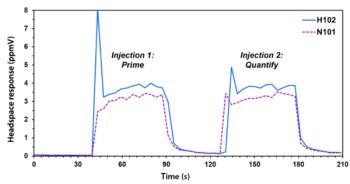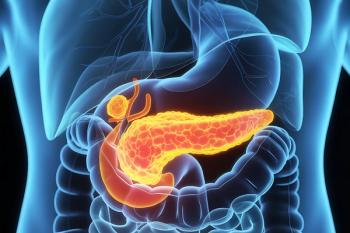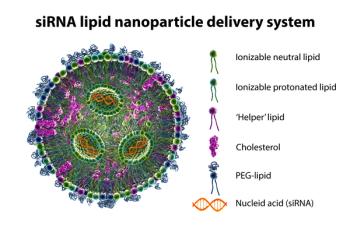
A Matrix-Matched Semiquantification Method for PFAS in AFFF-Contaminated Soil
Catharina Capitain and Melanie Schüßler from the Faculty of Geosciences at the University of Tübingen, Tübingen, Germany describe a novel approach using matrix-matched semiquantification to investigate per- and polyfluoroalkyl substances (PFAS) in contaminated soil.
You recently published a manuscript paper entitled “Implementation of Matrix-Matched Semiquantification of PFAS in AFFF-Contaminated Soil” (1). What is matrix-matched semiquantification and why is semiquantification necessary?
Semiquantification is used to estimate the concentration of chemical substances, such as per- and polyfluoroalkyl substances (PFAS), if analytical reference standards are not available. This is particularly important in the case of PFAS found in aqueous film-forming foam (AFFF)-contaminated soils, where most of the compounds lack commercially available standards. Our study presented a novel semiquantification approach for non-target screening, combining matrix-matched calibration and ionization class-specific average calibration curves (ACCs). Matrix-matched semiquantification involves several steps of standard spikes to the sample and accounts very accurately for matrix effects from the sample matrix by correcting signal suppression or enhancement that could otherwise skew the results. Even though it's not fully quantitative, this method is crucial. It provides a reliable approximation of contaminant levels that can support environmental monitoring, site remediation planning, and risk assessments, especially when dealing with complex mixtures of emerging contaminants such as PFAS.
Is there any reason you selected AFFF-contaminated soil for this project?
We chose AFFF-contaminated soil because it presents a particularly challenging and relevant case for semiquantification. AFFFs are known to contain a complex mixture of PFAS, many of which are not well characterized and lack commercially available analytical standards. In our previous study, we identified 124 PFAS in this contaminated soil, but only 28 of these could be quantified using available reference standards (2). That leaves a significant number of compounds for which conventional quantification methods are not feasible. In addition, correcting for matrix effects—which is crucial for accurate analysis—is typically performed using isotope-labeled internal standards. However, at the time of the study, isotope-labeled PFAS standards were only available for a limited number of anionic PFAS, and no labeled standards were available for cationic or zwitterionic PFAS, which are also present in high proportions in AFFF formulations. Given the structural diversity and high number of compounds, performing matrix-matched semiquantification using average response factors, instead of surrogate matching, provided a practical and efficient approach to estimate concentrations in a way that still accounts for the complex sample matrix.
What was novel about this research project and what were your main findings?
In this study, we refined thesemiquantification approach by Cao et al. (3) enhancing the accuracy and applying it to AFFF-contaminated soil. Key features were the classification into specific ionization classes based on the known structures of the compounds and the inclusion of matrix-matched calibration, which both significantly improved the accuracy of the semiquantification. Our main findings were that semiquantified concentrations exceeded those of target analytes and that the main contamination was in the first meter of soil.
What were the main challenges you encountered from an analytical chemistry perspective and how did you overcome them?
First, insufficient extraction of AFFF PFAS was a challenge. A dominant fraction of PFAS contamination in the topsoil (74%) consisted of cationic PFAS, for which methanolic extraction is poorly suited. The addition of ammonia to the extraction solvent could significantly enhance extraction yield. Second, when creating the calibration curves, we faced the issue of wide variability of the concentration ranges. Some PFAS (perfluorooctanesulfonic acid, 6:2 fluorotelomer sulfonamide propyl betaine, and 5:1:2 fluorotelomer betaine) were found at concentrations much higher than the spiked standards, which affected the calibration curves. To address this, we generated ACCs using sample matrices at different dilution levels, excluding the undiluted or less diluted extract matrices from these high-concentration PFAS to maintain curve accuracy. Lastly, there was the challenge of different matrix effects at varying soil depths when applying the topsoil model to deeper soil levels. However, it could be shown that the matrix effect from deeper soil levels to topsoil is lower compared to the matrix effect from deeper soil levels to the extraction blank. This means that the internal calibration curves from the topsoil are more precise than external calibration curves for the semiquantification of PFAS in deeper soil levels. However, inaccuracies must be accepted, which fall within the typical error range of semiquantification.
What role do ionization class-specific ACCs play in enhancing the accuracy of the semiquantification approach, and how does this benefit the detection of different PFAS classes like carboxylic acids and cationic PFAS?
Ionization class-specific ACCs play a crucial role in improving the accuracy of semiquantification. PFAS encompass a wide range of chemical structures, and their ionization efficiency in mass spectrometry (MS) can vary significantly depending on their functional groups and physicochemical properties. By grouping compounds according to their ionization behavior and applying class-specific ACCs, the semiquantification becomes more representative of the actual instrument response for each group. The study has shown that this reduces the error in estimated concentrations and improves confidence in the results.
Could you elaborate on how matrix-matched calibration was integrated into the method, and what impact this has on improving the precision of PFAS quantification in complex environmental matrices?
For semiquantification, we employed a standard addition method, where we spiked the sample with varying volumes of a PFAS standard mix. This was performed across seven calibration points ranging from 0.1 to 10 μg/L in both positive and negative ionization modes. This allowed us to account for matrix effects, such as signal suppression or enhancement, by using the sample matrix itself to create the calibration curve, rather than relying solely on solvent-based standards. This is crucial for complex environmental samples, where matrix effects can significantly alter the ionization efficiency of PFAS compounds. Also, the new publication by Pu et al. (4) emphasized the importance of using matrix-matched surrogate data in semiquantification methods.
The study demonstrated that semiquantified concentrations exceeded those of target analytes. What does this imply about the broader PFAS contamination that might be missed using traditional target analyte-based approaches?
The fact that semiquantified concentrations exceeded those of the target analytes highlights a critical issue: Traditional targeted analytical methods significantly underestimate total PFAS contamination. Targeted analysis focuses only on a limited subset of PFAS for which authentic standards are available, mostly for well-known anionic compounds. However, our study showed that the majority of PFAS present in AFFF-contaminated soil are non-target compounds, many of which are structurally diverse and not captured by standard methods. This means that relying solely on target-based approaches can underestimate the environmental risk. Semiquantification provides a more comprehensive picture of contamination, even if at a larger uncertainty range. It allows us to account for a wider range of compounds, including emerging, novel PFAS, or transformation products, that might otherwise be undetected.
Given the high accuracy achieved with a median absolute accuracy quotient (AAQ) below 2.27×, how do you think this new method compares with other conventional techniques used for PFAS quantification in complex environmental samples such as soil?
The median AAQs for cationic and zwitterionic PFAS, carboxylic acids, sulfonic acids, and sulfonamides were 1.78× (90th percentile = 4.3, n = 5), 1.70× (90th percentile = 4.0, n = 21), 1.32× (90th percentile = 2.5, n = 12), and 2.27× (90th percentile = 6.8, n = 6), respectively. Compared to the literature, the AAQs determined in this work are similar, for example, reference 5 reported a mean AAQ of 2.1× in spiked biota samples (liver from pilot whales), and reference 4 presented median AAQs between 1.34× and 1.59× for different semiquantification models in waste-activated sludge.
Could this novel semiquantification approach be adapted for analyzing PFAS contamination in other types of samples?
Yes, this novel matrix-matched semiquantification approach is highly adaptable and could certainly be applied to any classes of PFAS and other types of PFAS-contaminated samples, such as water, sediment, biota, or even industrial products. The method could be further refined by defining additional ionization classes based on the contamination pattern, assuming suitable reference standards are available.
Biography
Catharina Capitain holds a master of science in environmental and applied geoscience and is currently pursuing a PhD at the Faculty of Geosciences at the University of Tübingen, Germany. Her research focuses on the analysis, identification, and transformation of PFAS contaminants in soil and groundwater. Through her work, she aims to contribute to the sustainable reduction of PFAS and their environmental impact.
Melanie Schüßler has a background in environmental geoscience and is currently a PhD student at the Faculty of Geosciences at the University of Tübingen. She is interested in non-target analysis of PFAS in the environment. In addition, she investigates thermal desorption and transformation of PFAS to evaluate the feasibility of thermal remediation techniques for PFAS.
References
(1) Capitain, C.; Schüßler, M.; Bugsel, B.; et al. Implementation of Matrix-Matched Semiquantification of PFAS in AFFF-Contaminated Soil. Environ. Sci. Technol. 2025. DOI: 10.1021/acs.est.4c14255
(2) Schüßler, M.; Capitain, C.; Bugsel, B.; Zweigle, J.; Zwiener, C. Non-target Screening Reveals 124 PFAS at an AFFF-impacted Field Site in Germany Specified by Novel Systematic Terminology. Anal. Bioanal. Chem. 2024. DOI: 10.1007/s00216-024-05611-3
(3) Cao, D.; Schwichtenberg, T.; Duan, C.; et al. Practical Semiquantification Strategy for Estimating Suspect Per- and Polyfluoroalkyl Substance (PFAS) Concentrations. J. Am. Soc. Mass Spectrom. 2023, 34 (5), 939–947. DOI: 10.1021/jasms.3c00019
(4) Pu, S.; McCord, J. P.; Dickman, R. A.; et al. Examining Environmental Matrix Effects on Quantitative Non-targeted Analysis Estimates of Per- and Polyfluoroalkyl Substances. Anal. Bioanal. Chem. 2025. DOI: 10.1007/s00216-025-05796-1
(5) Lauria, M. Z.; Sepman, H.; Ledbetter, T.; et al. Closing the Organofluorine Mass Balance in Marine Mammals Using Suspect Screening and Machine Learning-Based Quantification. Environ. Sci. Technol. 2024, 58 (5), 2458–2467. DOI: 10.1021/acs.est.3c07220
Newsletter
Join the global community of analytical scientists who trust LCGC for insights on the latest techniques, trends, and expert solutions in chromatography.





